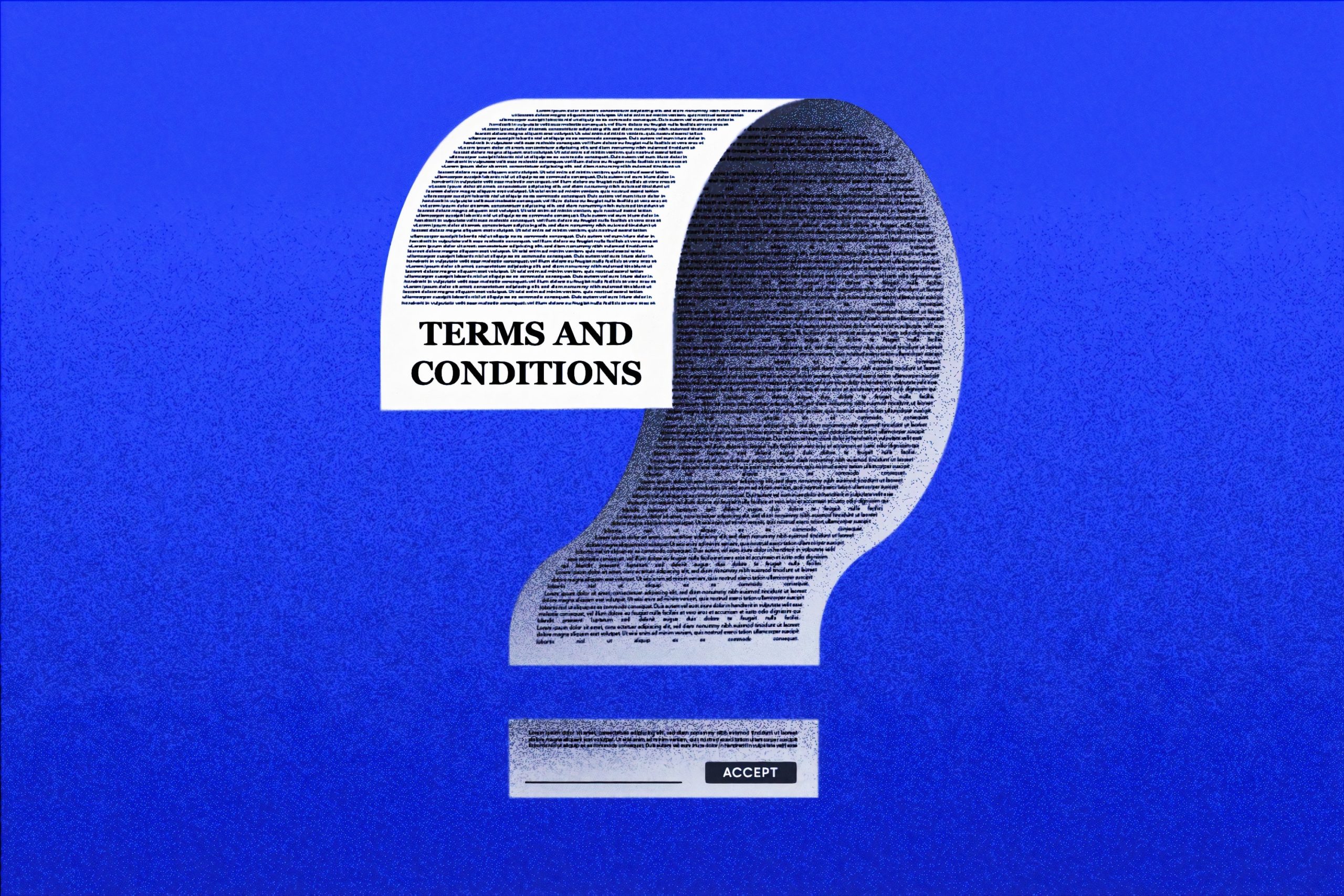

Quick Links
Quick Links
Did you know that 35% of the American work force is made up of freelancers? With the gig economy running in full swing, it’s not surprising to see an increase in the number of freelancers.
And why not?
Where else can you find a source of income that puts you in total control?
Unlike a 9-to-5 job, freelancing lets you work when you want, where you want. No rush hour traffic, no office hours to conform with.
As a freelancer, you live by a simple rule: The more projects you have, the better, especially if freelancing is your only source of income. While there’s nothing wrong with this motto, it can also give rise to a number of problems. The busier you get, the harder it is to keep track of your contracts. Keep reading to see some great contract examples you can use for your freelancing business.

Why Is a Freelance Contract Important?
While it is tempting to skip the formalities and just jump right in, there’s a reason why freelance contracts are essential.
It may seem harmless and unnecessary at times but not signing a freelance contract can become a decision you will soon regret. It can lead to serious consequences that you may not be able to undo.
The first and perhaps the most important reason to sign a freelance contract is for protection. Working without a freelance contract opens you up to potential problems like non-payment, liability, and in some cases, possible legal issues.
It’s important to put everything in writing so you and your clients will have something to get back to should disagreements arise.
Take the case of a freelance blogger, for instance. Before you begin writing, it would be great to put into writing how revisions will be dealt with.
- Will these changes be paid?
- Is there a limit to the number of revisions or changes you will allow?
- Will the revisions come at a different rate?
These should all be clearly specified in the freelance contract to avoid any misunderstanding between both parties. This will make working together easier and smoother as the project progresses.
That being said, what important elements should a freelance contract contain?

Introductory Statement
This is pretty self-explanatory since we see these in almost every contract we sign. What this section does is introduce the parties involved and provide a short overview of the said agreement.
Below is an example:
[YOUR NAME] <> [CLIENT’S NAME]
Contractor Agreement
[YOUR NAME] (Also known as “contractor”) will provide [CLIENT’s NAME] (also known as “client”) with (Describe the work or deliverable) as to the specifications detailed in the Terms and Conditions provided.
Contract in effect beginning: [DATE]
As you can see, you and the client will be designated as the contractor and the client for easy identification. For the work description, you don’t have to write it down in detail. A short overview written in one sentence should be enough.
You’ll have a chance to spell out all the details later in the Terms and Conditions section. The goal of this section is to simply establish who you’re working with and the kind of work that should be expected.

Terms and Conditions
This is probably the most important section of the contract because this is where you’ll find all the gory details. This is where all the expectations are clearly laid out to avoid confusion.
Here’s a brief example of what you should see in the freelance contract of a graphic designer:
Terms and Conditions
The following rates and terms apply:
Client will pay $_________ per week to contractor via PayPal no later than Tuesday of every week for work delivered the previous week.
Contractor is then expected to provide the following per the due dates agreed upon:
- Two well-designed image quotes for the client to choose from, to be posted the following week.
- Three social media graphics, each in square shape and not lower than 1000 x 1000 pixels in dimension.
It is worth noting that the content of this section does not need to be very detailed. As long as both parties fully understand and there are no grounds for confusion, the information should be more than enough.
This is, of course, on a case-to-case basis. Different projects have different requirements so just make sure that the most important details are not left out. If there’s a certain file format expected upon submission, make sure to include that as well as any other requirement you see fit.

Scope of the Project
The scope of the project is another important section you need to pay attention to. This is because more often than not, this is the part where disputes stem from.
Without a clear scope, it’s easy for clients to ask for additional tasks or revisions apart from what you originally agreed upon. This can lead to tons of extra work you won’t even be paid for doing.
Defining a scope allows you to set a limitation or an endpoint to your freelance contract.
The point is you get paid for work that you and the client both agreed upon. If they require you to work on additional tasks, they’ll need to prepare a separate contract for those extra tasks.
They simply can’t expect those added tasks to be part of the initial contract.
The bottom line is you work WITH your client and not FOR your client. They can’t expect you to perform and deliver for free. That would just be unfair, wouldn’t it?
Changes and Revisions
Speaking of additional tasks, changes and revisions is another important aspect of the contract you need to be very specific with.
Let’s be honest, no matter how good a writer, video editor, or social media marketer you are, revisions will always be inevitable. This is because you are trying to capture the vision of another person.
Sometimes, clients require a little fine-tuning from your end so you can interpret their ideas and expectations correctly.
These additional changes aren’t unusual but it will be in your best interest to specify how they will be dealt with should the time come.
Here’s an example from a blogger’s freelance contract:
Changes and Revisions
The price specified in this contract is based on the time I’ll be needing to complete a 1,500-word article as agreed upon. I also understand that revisions are part of any writing project so should you require anything as such, I’ll be happy to provide a separate estimate.
While most clients are fairly reasonable when it comes to this part, there are some who are picky and a bit of a perfectionist. These are the type who never seem to get satisfied, all the more reason for you to have this section in your contract.
You can always accommodate minor changes so long as they don’t take up much of your time. This clause protects you from clients who are very particular with their requirements. It also keeps you safe from those who are prone to requesting major changes when you’re halfway through.
The point is changes and revisions are okay but they do not come for free.

Copyright
Copyright is another aspect of freelancing that should be clearly defined through a freelance contract.
This is especially true for content creators like writers, graphic designers, and video editors among others. Under the US Copyright Law, Works Made for Hire states that any freelancer who is contracted by a client shall have copyright ownership unless stated otherwise.
This means that the copyright belongs to the creator and not to the person who pays for the work done. This will only be invalid if there’s an agreement between both parties that says otherwise.
So don’t be surprised if a client asks you to sign a copyright release unless they are open to allowing you to have ownership.
Some companies allow blog posts to be written under their freelance writer’s name. Others will have them credited either to the business owner, the company, or any person they choose to represent the brand.
Here’s a good example of a Copyright clause:
Copyright
It is hereby agreed that the Client will own the copyright for any material created under this agreement and that the Contractor is free to use some of the artworks and graphics created for his portfolio as long as the Client provides approval and consent.
Do take note of the last part so as not to run into any disagreement with your clients. As a freelancer, it’s normal to want to showcase some of your best work as part of your portfolio.
If you agreed to release the copyright of your work to them, it only makes sense to ask for permission first if you intend to use them.

Payment Terms and Schedule
No freelance contract will ever be complete without discussing payment. Nothing could be worse for a freelancer than to not get paid for all your hard work, won’t you agree?
Having the payment delayed is already worse in itself, what more if the payment doesn’t arrive at all?
This is especially true if freelancing is your bread and butter. How can you pay the bills and keep the lights on?
This is exactly why being very clear and specific with payment is crucial. Anything that involves money can’t be left to chance so you need to be very clear when it comes to the payment terms. You need to ensure that you are always paid on time.
Whether you prefer being paid weekly or monthly, the important thing is to put all of those in writing. It would also be best to establish early on which method of payment you want to receive the money with.
Here’s a good example of a Payment clause:
Payment
It is hereby agreed that Contractor will invoice client every Friday and that the payment shall be completed by the Client in the amount of $_______ to the Contractor. The said payment should be completed no later than Monday of the following week via PayPal.

Termination
It would also be useful to include a termination clause in your freelance contract should things go south and don’t work out.
Think of this as your “Eject” button that will allow both parties to end the contract if things don’t go as planned. This clause is very important because it’s your protection from an abrupt termination, something a lot of clients have a penchant for doing.
It’s not easy to receive a short and sudden email stating that the project has ended and that your services are no longer needed – TODAY.
You can keep this from happening with a termination clause in your freelance contract. A termination clause gives you more time to prepare should a project suddenly come to an end.
Here’s an excerpt of what can be found in a termination clause:
Rights to Terminate
Freelancer may terminate this Contract upon thirty days prior written notice as long as there are no open or ongoing projects at the time the notice is given.
Final Thoughts
Becoming a freelancer comes with its own set of perks. While it may not be similar to a 9-to-5 job, it doesn’t necessarily mean that you can apply the same formalities as having a contract.
A freelance contract is essential because it protects you in so many ways. You have to remember that working remotely means working with someone you haven’t met personally.
Is there any assurance that they will pay you for the projects you complete?
Will they stick to their word that you’ll have complete ownership of any deliverable you submit?
Is there a guarantee that you will be paid extra for additional changes or revisions?
It’s going to be difficult to answer these questions if you never signed anything on paper. With a freelance contract containing all the clauses mentioned, you can sleep well at night knowing that the client will abide by what was agreed upon.
If you are a writer, video editor, or copywriter who’s new to freelancing, you need to be smart. Never begin any project without signing a freelance contract because doing so can come back to haunt you.
You wouldn’t want to see all your hard work go down the drain all because you decided to work unprotected.
If you loved this article, we will appreciate it if you can share it over social media.
